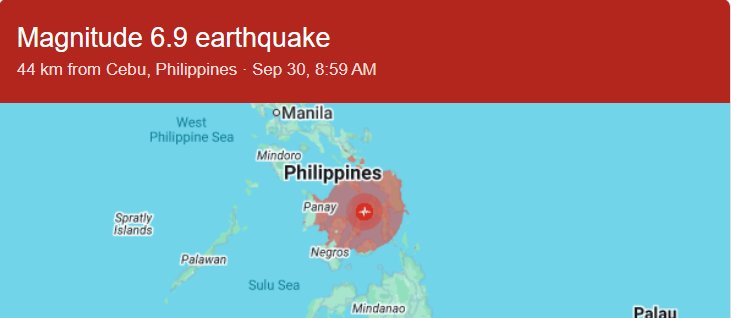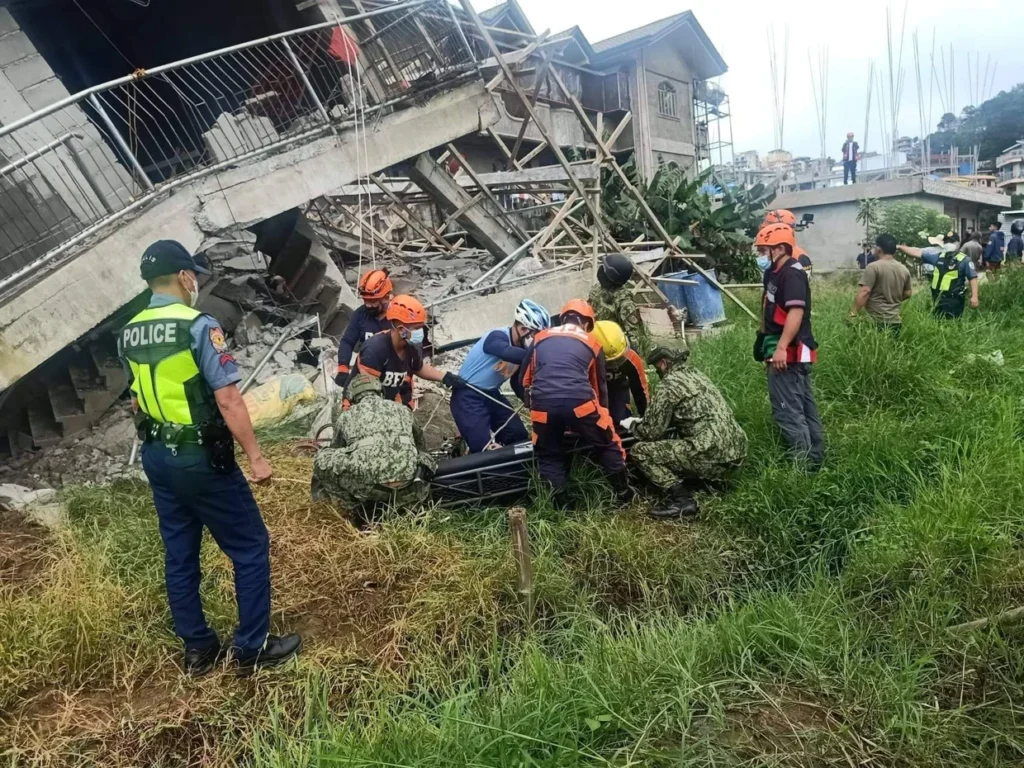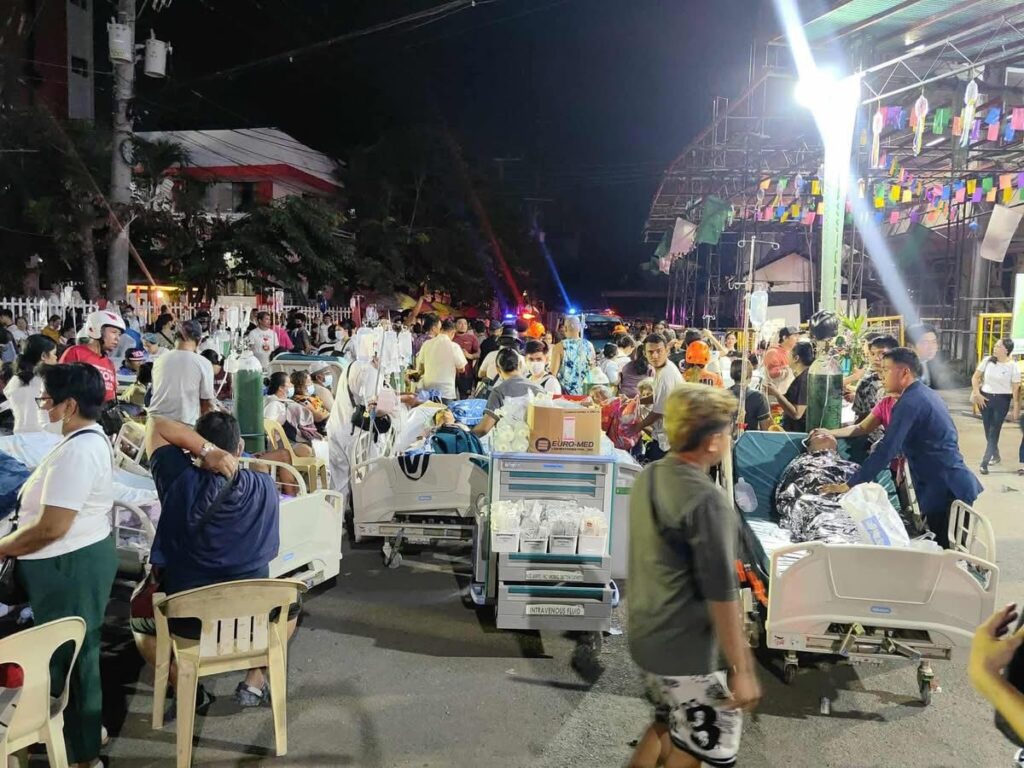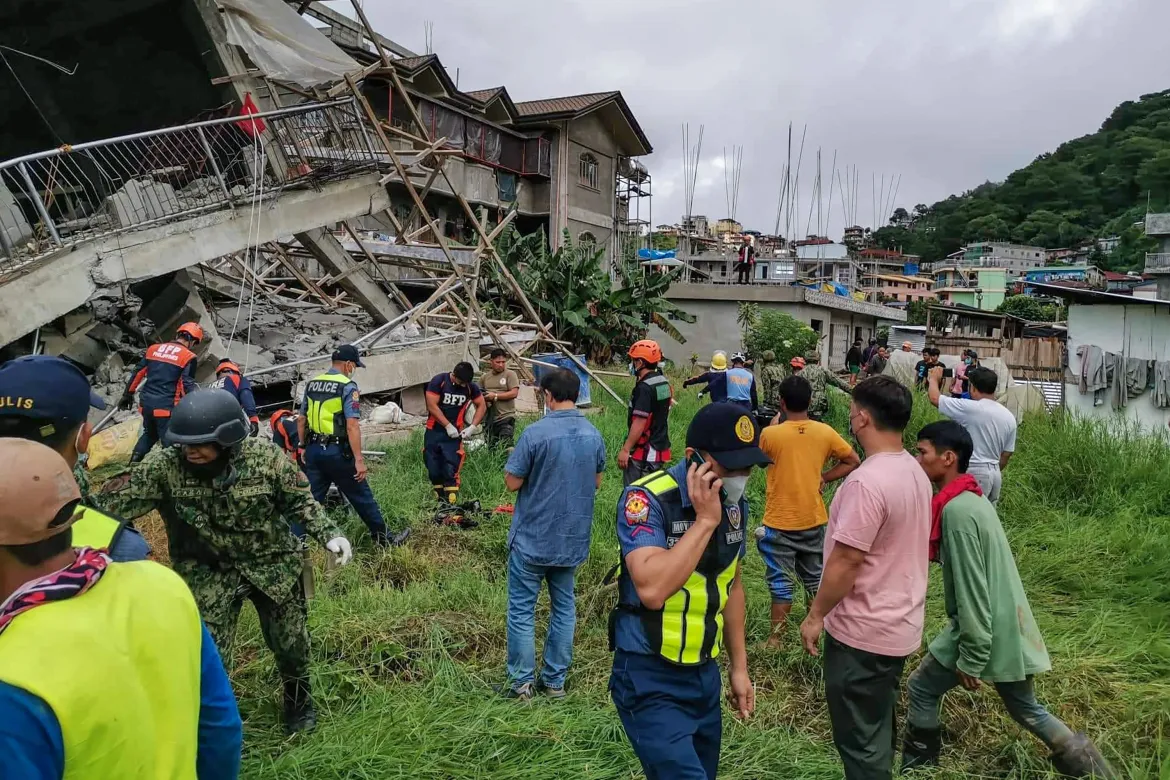Manila, Philippines – October 2, 2025– A powerful earthquake struck the Philippines on Tuesday, leaving dozens dead, hundreds injured, and widespread destruction across several provinces. The tremor, recorded at a magnitude of 7.1, hit central Luzon just after dawn, toppling buildings, severing roads, and sending frightened residents rushing into the streets.
The quake’s epicentre was reported near Nueva Ecija, but the shockwaves rippled across Manila and neighbouring regions, shaking skyscrapers and forcing the temporary suspension of public transport systems. Schools and offices were evacuated, while flights at Ninoy Aquino International Airport were delayed for safety checks.

Entire villages in the epicentral zone suffered severe damage. Residential homes, many built from lightweight materials, collapsed, leaving families trapped under debris. Power outages swept across Luzon, cutting electricity to hundreds of thousands of households. Hospitals in Manila and nearby provinces reported a surge of patients with fractures, head injuries, and trauma-related conditions.
Infrastructure damage is extensive — bridges cracked, highways split, and communication networks were disrupted, hampering the early flow of rescue information. Several churches and historic structures also sustained damage, prompting fears of further collapses during aftershocks.
Rescue Operations
Rescue teams, including the Philippine Army, Red Cross volunteers, and local disaster response units, were immediately deployed to the hardest-hit areas. Heavy machinery is being used to clear debris, while sniffer dogs search for survivors trapped in collapsed homes and buildings. Helicopters have been mobilised to deliver aid to remote areas cut off by landslides.

President Ferdinand Marcos Jr. declared a state of calamity in the affected provinces, freeing up emergency funds and resources. Relief goods such as food, water, and blankets are being distributed in evacuation centres, which are now housing thousands of displaced residents.
Human Toll and Global Response
As of now, at least 60 people have been confirmed dead, with the toll expected to rise as rescuers reach remote villages. Hundreds of aftershocks have rattled the region, complicating rescue efforts and adding to the fear of further structural collapses.

The international community has expressed solidarity with the Philippines. Offers of assistance have poured in from Japan, the United States, and neighbouring ASEAN countries, with some pledging to send rescue teams and medical supplies.
What Lies Ahead
Experts warn that recovery could take months, if not years, given the scale of the destruction. For many families, the immediate concern is survival — finding shelter, reuniting with loved ones, and mourning those lost. As the nation rallies together, the earthquake stands as another reminder of the Philippines’ vulnerability to seismic disasters and the urgent need for resilient infrastructure and disaster preparedness.
For more global updates and exclusive insights, visit us daily at www.whitehorsedaily.com











Leave a comment